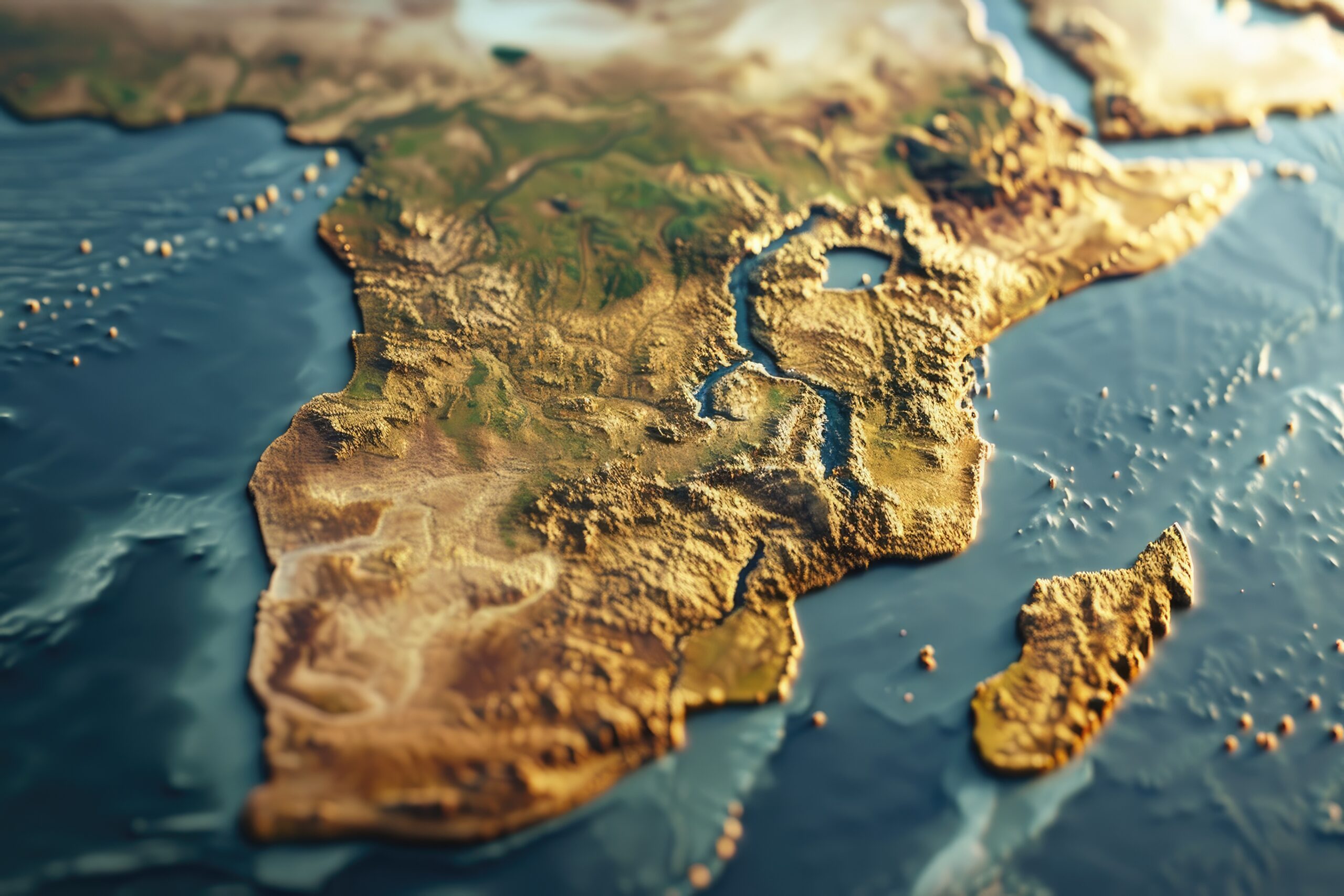Places to Visit in Libya as a Student
Libya, a country with a rich tapestry of history, culture, and natural beauty, offers a unique travel experience for students eager to explore beyond the conventional tourist trails. With its vast deserts, ancient cities, and Mediterranean charm, Libya presents an intriguing blend of the old and the new, making it a fascinating destination for those who thirst for adventure and a passion for learning. From the majestic ruins of Leptis Magna to the bustling markets of Tripoli, this guide will introduce you to the Libya places to visit that promise an educational and enriching journey. Whether you're a history buff, a nature enthusiast, or simply a curious traveler, join us as we explore Libya's hidden gems and spectacular sights, perfect for students looking to broaden their horizons and dive deep into the heart of this captivating country.
Tripoli
Tripoli, Libya's capital and largest city, is a commercial and cultural activity hub. It is nestled along the Mediterranean coast and presents a vibrant blend of modern urban life with historic Arabic and Ottoman legacies. Tripoli's bustling medina echoes the hustle of daily life, while minarets and modern architecture punctuate its skyline.
In Tripoli, history is palpable. Significant sites include the Arch of Marcus Aurelius, the city's Roman legacy, and the Gurgi and Karamanli mosques, which reflect its Islamic heritage. Museums like the Jamahiriya Museum house extensive collections, offering insights into the region's rich past and complex history, making Tripoli a treasure trove for history enthusiasts.

Benghazi
Tripoli, Libya's capital and largest city, is a commercial and cultural activity hub. It is nestled along the Mediterranean coast and presents a vibrant blend of modern urban life with historic Arabic and Ottoman legacies. Tripoli's bustling medina echoes the hustle of daily life, while minarets and modern architecture punctuate its skyline.
In Tripoli, history is palpable. Significant sites include the Arch of Marcus Aurelius, the city's Roman legacy, and the Gurgi and Karamanli mosques, which reflect its Islamic heritage. Museums like the Jamahiriya Museum house extensive collections, offering insights into the region's rich past and complex history, making Tripoli a treasure trove for history enthusiasts.

Leptis Magna
Tripoli, Libya's capital and largest city, is a commercial and cultural activity hub. It is nestled along the Mediterranean coast and presents a vibrant blend of modern urban life with historic Arabic and Ottoman legacies. Tripoli's bustling medina echoes the hustle of daily life, while minarets and modern architecture punctuate its skyline.
In Tripoli, history is palpable. Significant sites include the Arch of Marcus Aurelius, the city's Roman legacy, and the Gurgi and Karamanli mosques, which reflect its Islamic heritage. Museums like the Jamahiriya Museum house extensive collections, offering insights into the region's rich past and complex history, making Tripoli a treasure trove for history enthusiasts.

Sabratha
Tripoli, Libya's capital and largest city, is a commercial and cultural activity hub. It is nestled along the Mediterranean coast and presents a vibrant blend of modern urban life with historic Arabic and Ottoman legacies. Tripoli's bustling medina echoes the hustle of daily life, while minarets and modern architecture punctuate its skyline.
In Tripoli, history is palpable. Significant sites include the Arch of Marcus Aurelius, the city's Roman legacy, and the Gurgi and Karamanli mosques, which reflect its Islamic heritage. Museums like the Jamahiriya Museum house extensive collections, offering insights into the region's rich past and complex history, making Tripoli a treasure trove for history enthusiasts.

Ghat
Ghat emerges as a picturesque oasis amidst the Sahara Desert, boasting a unique blend of stunning natural landscapes and rich cultural heritage. As an ancient Tuareg town, it offers travelers an authentic glimpse of the Sahara's heart, featuring palm groves and traditional mud-brick architecture that seamlessly blend into the environment.
Surrounded by towering sand dunes, Ghat is a gateway to experiencing traditional Berber culture. The town is renowned for its annual festivals and its residents' vibrant attire, embodying centuries of nomadic traditions that continue to thrive in this serene desert haven.

Jebel Akhdar
Ghat emerges as a picturesque oasis amidst the Sahara Desert, boasting a unique blend of stunning natural landscapes and rich cultural heritage. As an ancient Tuareg town, it offers travelers an authentic glimpse of the Sahara's heart, featuring palm groves and traditional mud-brick architecture that seamlessly blend into the environment.
Surrounded by towering sand dunes, Ghat is a gateway to experiencing traditional Berber culture. The town is renowned for its annual festivals and its residents' vibrant attire, embodying centuries of nomadic traditions that continue to thrive in this serene desert haven.

Ghadames
Ghadames in Libya, known as 'The Pearl of the Desert', shines as an oasis city with its ancient architecture. Defined by the unique mud-brick houses, Ghadames is an urban marvel within the Sahara. Its ingenious building methods create a natural cooling system, suitable for the desert environment. This UNESCO World Heritage site captures the essence of historical Libyan urban planning.
The alleys of Ghadames lead explorers through a labyrinth of enchanting structures and into bustling markets. Here, traditional crafts and local produce display the city’s vibrant culture. The community's spirit is woven into the tapestry of alleyways that safeguard both the inhabitants and their rich heritage against the harsh desert climes.

Cyrene
Founded by Greek settlers in the 7th century BC, Cyrene was once a booming center of art and culture. Sitting atop the Green Mountain range, its atmosphere contrasts with the desert vibes of Ghadames. Remnants of imposing temples, theaters, and public baths evoke the city’s grandeur, with its well-preserved necropolis shedding light on ancient burial customs.
Today, Cyrene is a treasure trove for archaeologists. Excavations reveal artifacts that tell tales of a sophisticated society whose influence spread across the Mediterranean. The site’s Greek and Roman influences testify to a culturally rich past, bridging histories within Libya’s diverse landscape. Cyrene continues to mesmerize history buffs and casual visitors alike with its storied ruins and panoramic views.
Cyrene stands as a silent witness to the ebbs and flows of civilization. It is a primary destination for those seeking to unravel the tapestry of the ancient world. Visitors are afforded a unique insight into the life and times of its Greek and Roman inhabitants, with every artifact and monument offering a narrative of scholarly intrigue. The city's archaeological significance continues to underscore Libya's multifaceted history.
Amidst Libya's dynamic topography, Cyrene emerges as a beacon of ancient cultural synthesis. Its ruins, eloquent in their decay, bear testament to the exchanges between Greeks, Romans, and indigenous peoples. These interactions fashioned a microcosm of Mediterranean heritage, which now provides invaluable insights for those studying the ancient world. Amid the remnants, Cyrene whispers stories of a time when it was a nexus of art, philosophy, and commerce.
Final Thoughts
As we conclude our exploration of Libya's must-visit destinations for students, it's clear that this country offers more than just historical sites and natural beauty; it presents a unique learning opportunity that extends far beyond the classroom. Each location, from the bustling streets of Tripoli to the serene oasis of Ghat, tells a part of Libya's rich narrative, weaving together threads of history, culture, nature, and the culinary delight of Libyan dishes into a tapestry that is as diverse as it is beautiful.
For students, these destinations offer a chance to immerse themselves in the real-world application of their studies, whether that be in history, archaeology, cultural studies, or environmental science. Exploring Libya's ancient ruins like Leptis Magna and Sabratha provides a tangible connection to the past, while the natural wonders of Jebel Akhdar and the Sahara Desert offer insights into the country's geography and the challenges of life in extreme environments.
Moreover, the experience of traveling to and within Libya as a student is an education in itself. It teaches resilience, adaptability, and the value of seeing the world from different perspectives. It challenges preconceptions and encourages a deeper understanding of the complexities of global history and culture.
In embracing the adventure that Libya offers, students gain more than just academic knowledge; they develop a global mindset and a deeper appreciation for the interconnectedness of our world. So, whether you're drawn to the allure of ancient civilizations, the challenge of navigating diverse landscapes, or the joy of encountering new cultures, Libya's varied destinations promise a journey that is both enlightening and enriching.
Remember, the key to a rewarding visit to Libya—or any destination—is to travel responsibly and respectfully, always mindful of the local customs, culture, and environment. As students and travelers, we have much to learn from the places we visit and the people we meet along the way. So pack your bags, open your mind, and prepare to explore Libya, a country that offers endless lessons for those willing to embark on this remarkable educational journey.